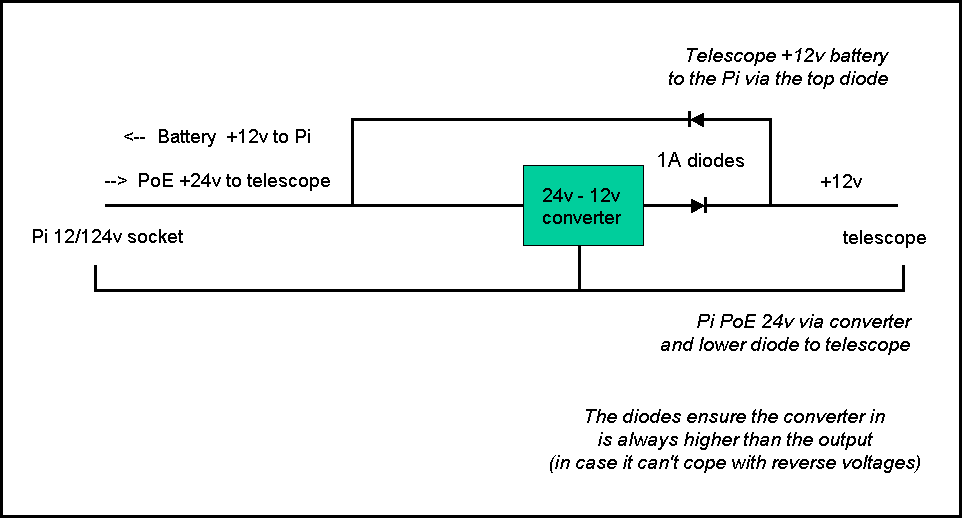*** UNDER CONSTRUCTION ***
Driving a telescope using PoE
After building my Pi Zero Astro-Cam, which was powered via PoE, I decided to see if I could extend the PoE to powering the telescope as well (lead-acid batteries are heavy and remembering to recharge one before each planned observing session is a real pain).
It would all come down to current demand. Step 1 is to see if there is the slightest chance of this working by checking out what PoE can provide .... Various PoE 'standards' exist, however all I care about is the rated current carrying capacity of the UTP CAT5 cable = and this is stated as '1A per wire pair'. Since I'm using 2 pairs to carry current, that gives me 2A to play with. I'll be starting with 24v at the 'injector' end and dropping that to 12v at the far (telescope) end. Even using an 'off the shelf' (read, cheap) switching regulator 'in theory' 2A at 24v is 4A at 12v, however I'll not be 'counting' on that as there is going to be some voltage drop down the 50m cable I want to use. So, step 2 is to measure what the telescope actually requires
Telescope power requirements
'In theory' when the tracking motors start up the current demand is 'infinite' - however the motors are tiny so I'm going to rely on capacitors to provide this 'infinite current' and just focus on the 'average' current requirements. So, out with the multi-meter :-
Running from a 12v battery, measured current :- Idle RA motor Dec motor Both motors
The cable

The goal is a single cable that can be used either to power the Pi astro-can from the telescope battery pack, or power the telescope from the PoE supply.
Since the battery is 12v (more or less) and the PoE 24v (or a bit less) a few diodes in the way isn't going to make much difference, so it should be easy.
Using different connectors at each end will guarantee it can't be accidentally reversed (and send 24v into the telescope circuits)
The diodes are to ensure the 24-12 volt DC-FC voltage converter - which will typically be an off-the-shelf mini-PCB adjustable regulator - never sees a 'reverse' voltage, although chances are the converter chip won't care.